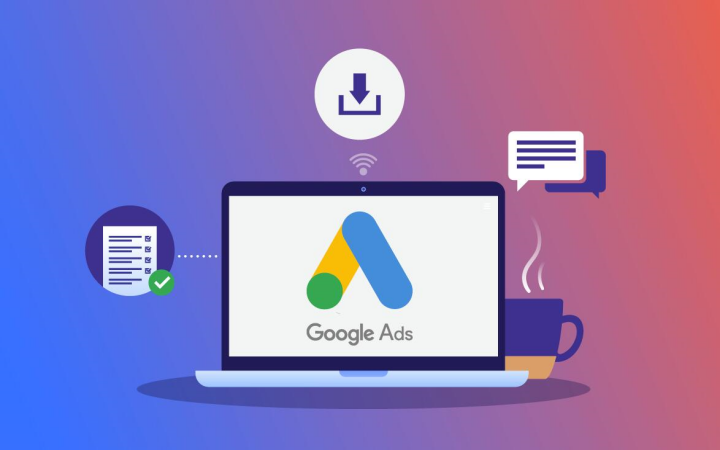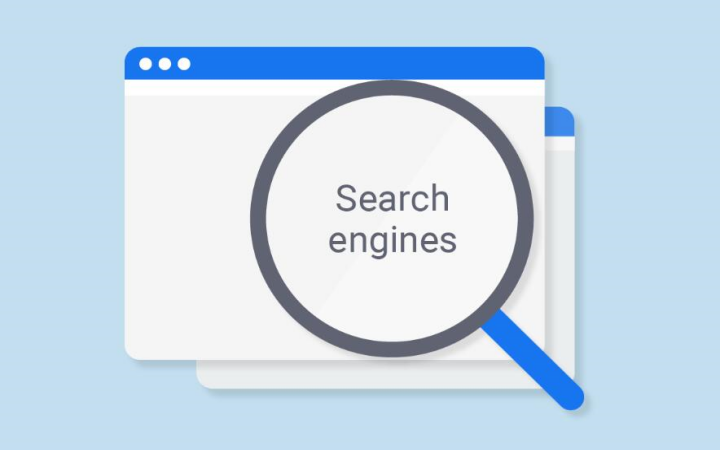In the dynamic landscape of marketing, the ability to commend unique features of digital media as compared to traditional TV advertising is of paramount importance. Both media are beneficial in their way, but digital media brings numerous benefits that are different from TV media. This extensive guidance is going to explain the differences, costs, and hints for successful advertising in the digital and TV worlds. Thus, it will give insights to digital marketers and business owners as well.

The Benefits of Digital Media Advertising
Targeted Advertising
Digital media continues to be a major highlight as far as targeted advertising is concerned. In contrast to television advertising, which is broad in its reach, digital media offers you the opportunity to apply for perfect marketing that covers your target group and meets their needs by its precision targeting through incorporating media, disciplines, and behaviors. Personalized targeting ensures that your direct message gets to those who have the most likelihood of being interested in your product or service.
Measurable Results
The important benefits of digital media are the various tracking and measurement possibilities that are not available in any other form of advertising. Businesses can get full, real-time performance feedback by utilizing tools like Google Analytics to reveal the most effective areas for their online campaigns and, thus, the potential to make immediate changes to reach their goals. Measuring the data through clickthrough rates, conversion rates, or return on investment (ROI) allows advertisers to determine the effectiveness of their efforts easily.
Cost-Effectiveness
Digital media, which is the most common, is much cheaper compared to TV advertising. With digital ads, you choose your budget, and only when someone clicks on your ad do you pay the fee (pay-per-click models). This is an innovative business strategy because it allows small and disadvantaged business enterprises to take advantage of digital marketing through small budgets without the necessary large TV ad’s financial outlay.
Engagement and Interaction
Digital media has offered a place for the audience to interact, unlike TV advertising. Social media is an example of this, wherein companies communicate with their clients via comments, likes, shares, and even private messaging. This mutual communication helps customers form deep relationships with their favorite brands, thus increasing brand loyalty and trust.
Flexibility and Speed
The power of the internet is the ability to make instant changes using digital media in promotions. If one advertisement is not doing well, then it can be changed or removed immediately. This kind of flexibility is not available with TV ads, which quickly and at a high cost is what is needed for changing an ad.
Are There Any Benefits of Television Advertising in 2024?
Despite the numerous advantages available with digital media, television advertising continues to occupy a prominent place in the marketing world, whether in 2024 or at any other time.
Broad Reach
TV advertising has a broad reach, which makes it best for targeting a generalized audience. TV is the most effective way to reach a large number of people in a short period, and it is highly recommended for products having mass appeal.
High Credibility and Prestige
Television ads are frequently perceived as prestigious and more credible. Having a presence on TV can establish a brand’s image and give it a more authentic feel that may only sometimes be communicated through digital ads.
Impactful Storytelling
TV commercials help to visually tell the story through a combination of words, images, and movement that is evocative. This platform can stir up feelings and create strong brand experiences that people will remember long after the commercial is over.
Captive Audience
People who watch TV are usually more engaged, especially during the time of famous TV shows or events. Compared to digital ads, the law of skip and ignore is not applicable here. TV ads are more watched and more a potential part of interactivity than in the other cases that can be experienced.
How Much Does Digital Media Advertising and Marketing Cost?
Budgeting for Digital Media
Digital media advertising has many options that can meet several budget ranges. Accordingly, some examples and indications of digital advertising expenses are as follows:
- PPC Advertising: The costs of PPC advertising are very diverse, but all businesses should prepare to pay from $1 to $2 per click on structures like Google Ads.
- Social Media Advertising costs can start as low as $5 per day, but they depend on objectives, audience size, and competition.
- Content Marketing: The procedure of creating high-quality content can be quite demanding of financial resources, but it usually yields a high return on investment in the long run.
Factors Influencing Costs
Many factors can change the total cost of digital media advertising; here are some of the main ones:
- Industry Competitiveness: If the industry is highly competitive, it may have high advertising costs.
- Target Audience: If targeting is narrower and the audience is more specific, it might increase the costs.
- Ad Quality: Ads of certain high quality that captivate users might even reduce costs by increasing the relevancy scores and the clickthrough rates, respectively.
Understanding TV Advertising Costs
TV commercials, the most traditional form of getting your message on air to attract potential customers to your brand, are usually the most expensive. Marketing costs for media are not a one-time expense career; there will be many of them involved in an effective advertising campaign.
Production Costs
The creative process is the main reason for producing high-quality TV commercials. It consists of script writing, filming, editing, and, at the very least, hiring of actors.
Air Time
Local TV slots, open time, and network preference are the most critical factors influencing the cost of airing outfits. Prime-time slots on major networks can cost hundreds of thousands of dollars, while local TV spots may be more affordable, ranging from $200 to $1,500 per 30-second spot.
Frequency
Repetition is the secret of successful TV ads. For this reason, businesses regularly have to buy numerous postal code levels to get the promotion effects that point out their a further increase in the spending costs.
Additional Expenses
Other expenses like agency fees, market research, and tracking services are more. Yet, the contribution could be several thousand dollars, as well.
Tips for Successful Digital Media Marketing
Know Your Audience
The efficiency of your digital advertisements is the result of a good understanding of your target audience. Marketing data plus analytics can help you identify your potential customers by means of demographics, interests, and behavioral patterns. In addition, you should also create an advertisement that will attract them. Ensure your ads are aligned with your target group.
Leverage Multiple Channels
Instead of focusing on one marketing platform, use various social media, search engines, email marketing, and content marketing to grow your reach and improve outcomes.
Create Quality Content
Top-notch content is what will keep your audience engaged. Spend some money on copywriting, graphic design, and video production to develop the best possible marketing materials that will appeal to your particular market.
Test and Optimize
The best marketing only comes through innovation in all areas of your campaign, from the title of the ad to the images and even the call to action. You can do this by A/B testing different formats and changing over time based on what resonates better with your target audience.
Monitor and Analyze
Using metrics and analytics tools, one can assess campaign performance and track conversion rates, clickthrough rates, and ROI. Decision-making in marketing should be data-driven, with reliable ratings on which to base decisions.
Tips for Successful TV Advertising Campaigns
Define Your Goals
Ensure that you stipulate straightforwardly your aim through your TV advertising campaign. Whether it’s brand awareness, lead generation, or sales, having specific goals will guide your strategy and measure success.
Know Your Audience
Just like in digital marketing, your goal in TV advertisement is to connect with your target group. Do a market study to learn about the demographics, and then look at how much time your potential clients spend watching TV.
Create a Compelling Story
TV commercials are an essential tool for storytelling. The main goal is to create a story that will make viewers stop and become emotionally involved in your company, thereby promoting your company values.
Invest in Quality Production
The quality of the production can be one of the compelling factors in the success of a TV ad. Work with experienced professionals to craft an aesthetically pleasing and polished commercial.
Choose the Right Time Slots
Choose time slots that fit your target market’s viewing habits. Prime-time slots can be costlier but have more audience and a better participation rate.
Measure Results
Use tools and services to track the performance of your TV ads. Track figures like awareness, frequency, and brand recall to judge the success of your campaign.
Digital Versus TV: Which is More Cost-Effective?
Comparing which source of advertising is more cost-effective will depend on several variables, such as your budget, your consumers, and the purposes. Here’s a comparison to help you decide:
Digital Media
- Lower Entry Costs: Digital marketing usually requires a lower initial investment, which is beneficial for small businesses with limited funds.
- Precise Targeting: The capacity to aim precisely at certain groups reduces unneeded expenditures and thus enhances ROI.
- Measurable Results: The capability to see analytics in real-time and track monitoring offers the necessary data about the campaign’s performance. Thus, you can make changes immediately and optimize the campaign.
- Flexibility: Digital ads are easy to implement and can be different from those on TV, which helps with the flexibility that digital offers.
Television
- Broad Reach: Ads on TV are capable of reaching a vast audience, which is suited for massive products.
- High Credibility: TV presence prompts an increase in people’s perception of the brand, adding a new layer of credibility and esteem to it.
- Impactful Storytelling: TV commercials can have quite an impressive effect on people through the use of audio and video).
The choice of advertising between digital media and TV is based on your specific necessities and the objective you are trying to attain. In most businesses, a combination of the two can be a game-changer and yield top-notch results. Use the positive side of each to design a strategy that is comprehensive and capable of high productivity in the marketing domain.
Conclusion
In the ad industry landscape, digital media and TV advertising are the main contenders. Every medium has its strengths and weaknesses. Digital media includes micro-targeted advertising, trackable results, high entry-level, etc. Digital ads are also active, and you have more control over what you see and can interact with the audience. In contrast, TV advertising has wide coverage, credibility, and emotional power.
Deciding on the ideal one comes down to your business goals, finances, and the characteristics of your audience. By equipping yourself with the relative endorsements and disadvantages of each strategy, you can perform accurate studies and then foresee results.
Are you willing to take digital marketing a step further? If so, call us, and we will tell you how to optimize your skills and enable you to achieve more responsive advertising techniques.


